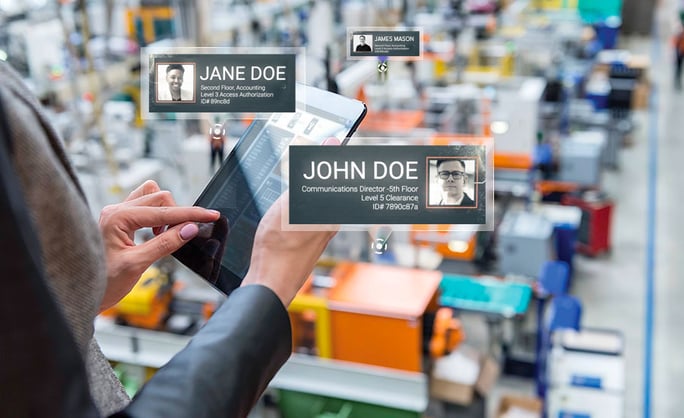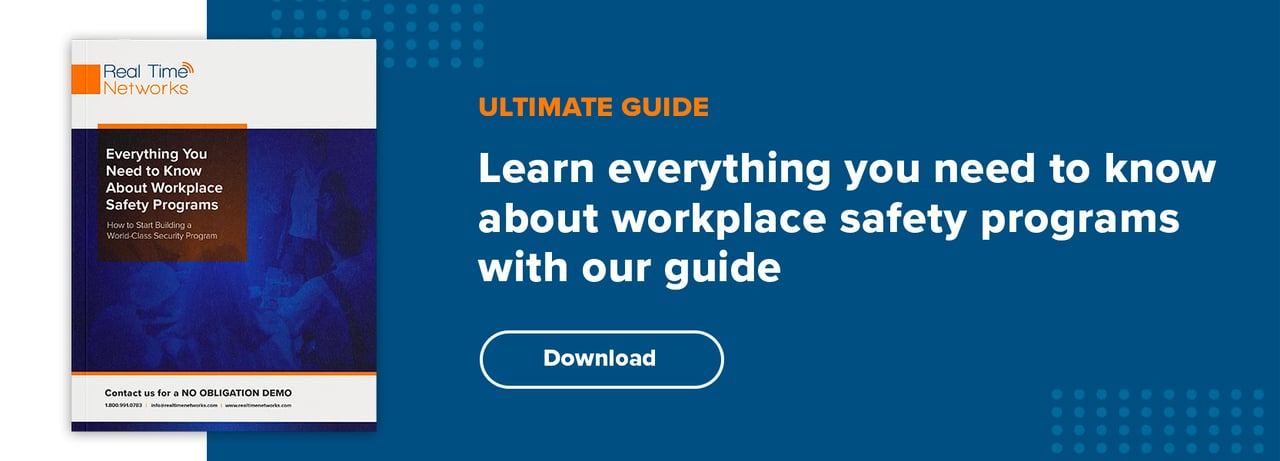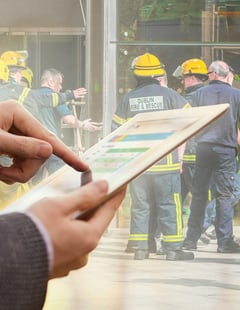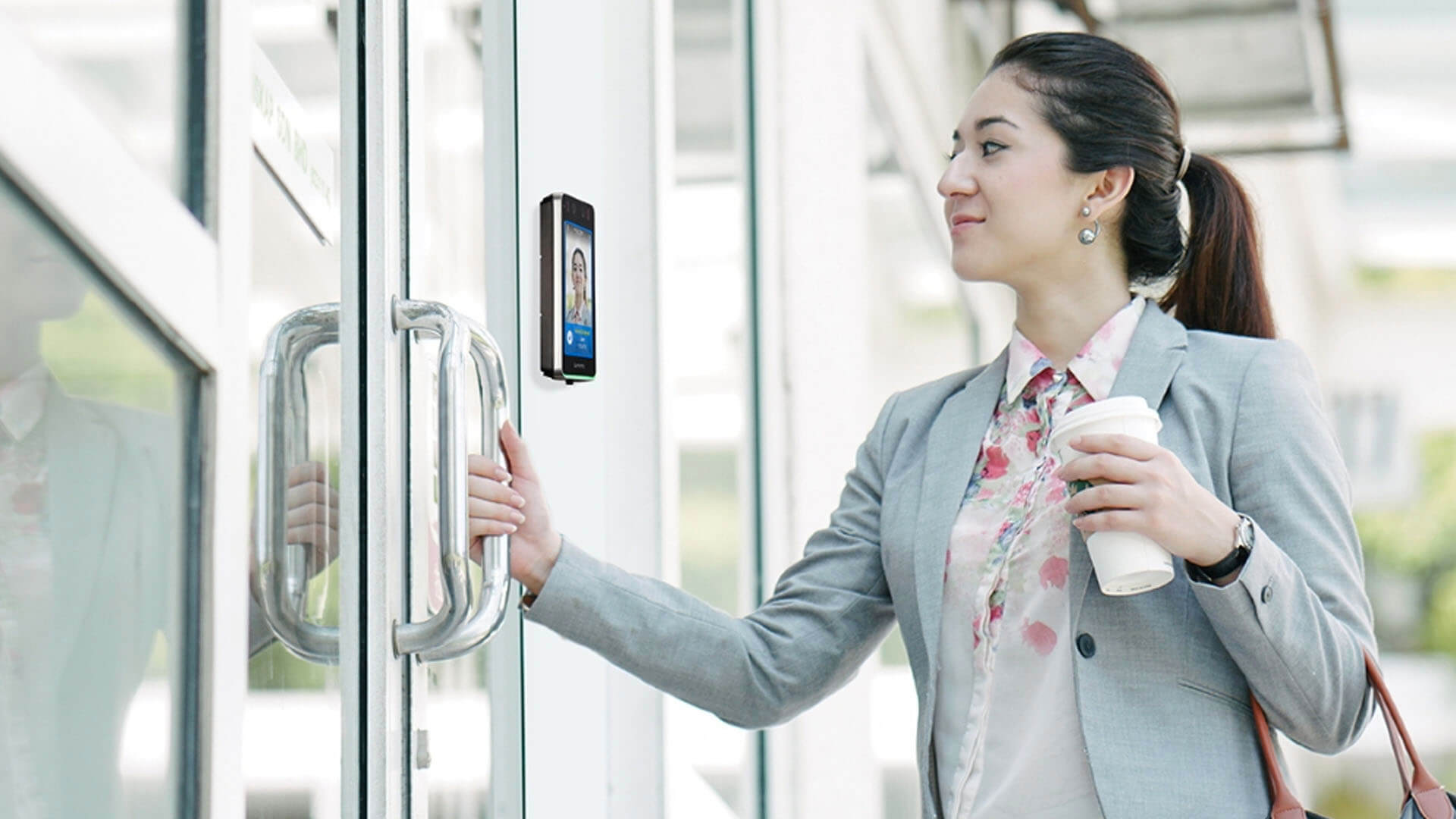By Jay Palter | February 9, 2022
Today’s workplaces are fluid, with people constantly coming and going. In recent years, the growth of hybrid working plans has only made them more fluid, so it is more challenging for a health and safety officer to know who is in the office on any given day. They need new tools.
Many health and safety officers assume emergency mustering systems only have a use during active emergencies, but this isn’t necessarily true. These systems are among the latest smart technology tools available to organizations seeking modern, digital solutions to tricky safety problems. They help improve your overall emergency preparedness and improve employee safety before, during, and after emergencies.
Want to learn more? This article explains how emergency mustering systems work, how you can use them as part of routine operations, and how you can use them at muster points during emergency evacuations.
 What is an Emergency Mustering & Roll Call System?
What is an Emergency Mustering & Roll Call System?
These systems provide security personnel, health and safety officers, and anyone else monitoring staff wellbeing with an up-to-date list of who is in your facility.
Each employee receives a badge with an embedded wireless tag. These wireless radio frequency identification (RFID) tags identify the wearer when approaching an RFID beacon that you’ve placed. You’ll have a beacon at each of your muster points and can include more throughout your facility, such as at exit points or near hazardous materials.
So instead of having an emergency manager take emergency roll calls by hand at each of your fire muster points during a chaotic evacuation, the muster system automatically records when personnel are confirmed safe. Emergency managers can check the system’s automated roll on their smartphones or tablets to confirm who is safe and who might still be at risk in your facility. If you’ve provisioned other sensors through your facility, the system can even confirm their last recorded location.
What is a Muster Point?
A muster point is a designated location for staff to assemble after evacuating your facility. Getting personnel to your muster points is one of the first steps in a successful evacuation and recovery effort. Once they've reached these safe locations, your assigned emergency managers can carry out first aid or get personnel further out of harm’s way if necessary.
Where you locate muster points depends on several criteria. Taking the time to determine their proper locations and layouts can help save lives when an emergency strikes. Having more staff safe, injury-free, and ready to return to work will enable your business to restore normal operations as fast as possible.
Identifying good muster points
Start by thinking about the emergencies your organization is most likely to respond to. Fire and flood are the most common causes of evacuations, and your muster point planning should take that into account. But also consider other local hazards. You may need to prepare for events such as:
- Hurricanes
- Tornados
- Earthquakes
- Explosions
- Hazardous waste spills
- Civil unrest
- Workplace violence
Good muster points have four key qualities:
1. Safe Surroundings
No matter how we plan, emergency evacuations will never go perfectly. People’s stress levels will be high, and they won’t think clearly. So select muster points free of potential hazards during emergencies, like downed power lines or tree limbs. Eliminate the possibility that a distracted evacuee might injure themselves at your muster points.
2. Safe Distance
A good rule of thumb is to establish muster points at a distance one and half times the height of the highest point of your building. That is important for two reasons. First, it reduces the risk of flying debris injuring people recovering at muster points. Second, it provides plenty of space for emergency service teams and their vehicles to operate closer to your buildings.
3. Appropriate Amount of Space
Periodically review your muster point size and locations to ensure you have enough space to accommodate everyone who might be in your facility. That includes temp workers, on-site contractors, and visitors too.
4. Accessible to Everyone
You also need to ensure your muster points are accessible to people of all mobilities. For example, if you’re selecting muster points on high ground to avoid floods, make sure there is an accessible route to reach them and not just a climb up a steep grade that might be too difficult for injured personnel or those with physical disabilities.
Emergency Mustering Systems Are a Better Way to Take Nominal Roll
Emergency mustering systems replace time-consuming and potentially inaccurate nominal roll calls. An automated system accounts for all personnel faster than someone taking roll manually ever could. They can also identify the last known location of personnel still at risk in your facility. The extra minutes you gain using an automated mustering system during an emergency could be what you need to get someone to safety.

An Important Part of Your Company’s Emergency Preparedness Plan
Effectively managing evacuations is important, but that is just one component of an emergency preparedness plan. The actions your personnel take during the first few minutes of an emergency can impact the state of business for months or even years to come. So you must have a clear plan in place for what to do when disaster strikes. You don’t want to leave your people guessing in those first few critical moments.
Your emergency plan should protect both your people and your business. You want everyone to return after an emergency, and you want them to return to an organization that is ready to rebuild as soon as possible.
Federal regulations require many businesses to maintain certain levels of emergency planning. Regulations for worker safety are particularly robust in the United Kingdom. In the countries where Real Time Networks operates, safety standards are enforced by:
- The Occupational Health & Safety Administration (OSHA) in the United States
- The Canadian Center for Occupational Health and Safety (CCOHS) in Canada
- The Health & Safety Executive (HSE) in the United Kingdom
- The European Agency for Safety and Health at Work in the EU
Lone working safety tracking systems integrate well with mustering systems
Companies in high-risk settings often use emergency mustering systems alongside lone worker safety systems. These networked systems work well together as they often use the same wireless RFID badges to communicate with system beacons. As a result, health and safety operators can monitor isolated workers and receive real-time alerts. And then, if an evacuation occurs, security personnel can check on those lone workers at their last known locations.
Be Ready to Adapt
Emergency preparedness requires vigilance. Set a periodic review schedule for your plan. Pay close attention to any changes in your facility or the nature of local threats that might affect your evacuation plan. For example, if there has been a major change to your building’s structure or occupancy, you need to reevaluate your evacuation plans.
Help With Drilling and After-Incident Cleanup
An emergency mustering system clearly has value during an evacuation, but it has value for your organization at other times too. These systems automate many of the required components of emergency preparedness plans, and are beneficial for planning, drilling, and other stages of your emergency operations.
Before Emergencies
Automatically collecting a nominal roll of personnel within your building has many benefits in day-to-day operations. For example, if a minor security incident requires you to sweep a particular area, your mustering system can inform you of everyone who was last known to be there. Mustering systems are also designed to hold emergency contact information, so health and safety officers can have it readily available at all times.
You can also use your mustering system as an aid during evacuation drills. You’ll want to train personnel in the system’s use. Workers will need to know how to ensure beacons read badges, and safety officers will need to know how to use the system’s management dashboard. Automated roll calls will get drills completed efficiently so you can return people to their jobs faster. A recent note from a Real Time Networks customer confirmed they were able to drop their total workforce evacuation time from 13 minutes to 3 minutes with the help of our mustering system.
After Emergencies
Last-known location features continue to be useful for any rescue operations that emergency service teams must conduct after you get personnel out of your facility. Getting accurate information on who is where in your facility allows those teams to increase the chance of successful rescues. Medical personnel and your management team can also access staff emergency contact information loaded into the system.
Automated systems bring you peace of mind when you need it most. They offer a host of features to help keep your staff safe in emergencies and help your staff protect your business. For many organizations, they are a smart, effective investment for one of the most critical aspects of their business management.

Want to see an emergency mustering system in action?

Jay Palter
Vice President of Marketing





